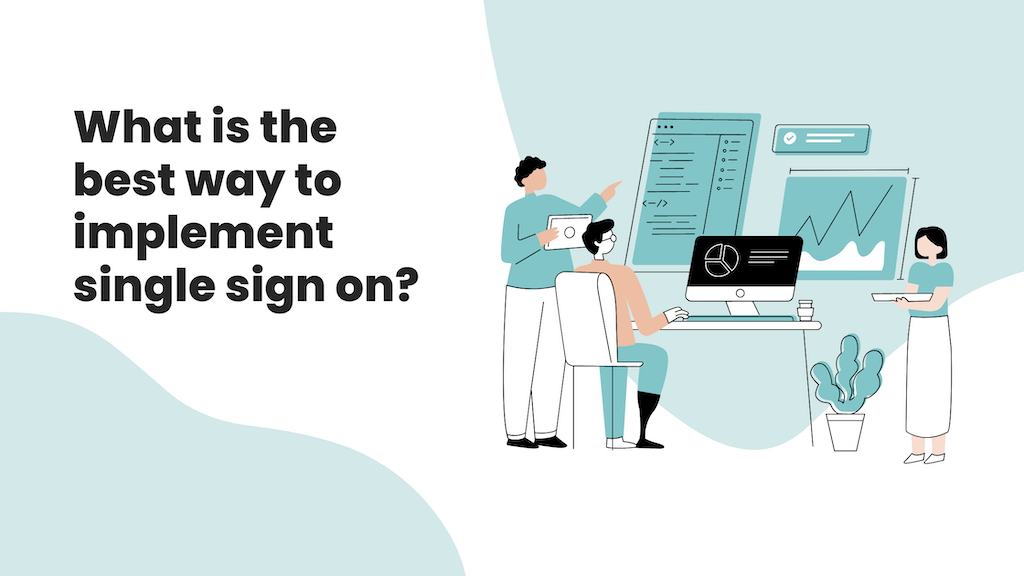
Introduction
If you’re in the business of providing party services, you know how important it is to streamline your processes and make things as easy as possible for your customers. One way to do this is by implementing single sign-on (SSO) for your online platforms.
With Workflos Single Sign-On, your customers can log into your party services platform with just one click, using the same username and password they use for other applications. This means they don’t have to remember multiple login details or waste time entering them each time they access your platform.
Not only does SSO make things easier for your customers, but it also improves their overall experience. They’ll appreciate the convenience of being able to access your platform quickly and easily, without any hassle.
In addition, implementing SSO can also improve the security of your party services platform. With just one set of login details, your customers are less likely to use weak or easily guessable passwords, which can leave their accounts vulnerable to hacking or other security breaches.
So if you’re looking for a way to enhance your party services platform, consider implementing single sign-on with Workflos. Your customers will thank you for it.
Why single sign-on?
Single sign-on (SSO) is a solution that allows users to access multiple applications with one set of credentials. SSO can save your company time and money, improve user experience and increase security.
Types of SSO
Single sign-on (SSO) is the practice of using a single user name and password to log into multiple applications. With SSO, you don’t have to remember different usernames and passwords for each application you use; instead, you can log in once with your credentials and gain access to all of your applications through one central login screen.
There are several different types of SSO:
- Multi-factor authentication (MFA): MFA requires more than just a username/password combination before granting access to an account; it requires users to take an extra step such as entering a code sent via text message or email verification before they can login successfully. This additional layer of security helps prevent unauthorized users from gaining access if their credentials are stolen by hackers through phishing scams or other methods that trick users into giving up sensitive information such as credit card numbers.* Federation: Federation allows users from one organization’s directory system (“directory”) to seamlessly authenticate against another organization’s directory system without requiring them to create new accounts within either system.* SAML 2: Security Assertion Markup Language 2 (SAML 2) is an XML based standard used for exchanging authentication and authorization data between parties over HTTP using simple web browser redirects
The benefits of using SSO
- It improves the user experience. Users don’t like having to remember multiple passwords and keep them secure, which is why the SSO helps make it easier for them to use your applications.
- It reduces the number of passwords you need to remember. With SSO, there’s only one password that lets you log in from anywhere–the one you use for your email account or other trusted identity provider (IDP). That way, if someone gets access to any one of those accounts, they can’t get into anything else through them without first being granted access by an administrator who has proper permission set up in ADFS or another single sign-on system like that!
- It makes managing users easier because everything is centralized under a single management console rather than spread across multiple authentication systems with their own interfaces. This also means less time spent managing these systems because they’re already set up correctly and working together seamlessly at all times; just login once per day then go about doing whatever else needs doing throughout each day without worrying about needing extra help from others because everything already works great on its own!
Implementing SSO with Workflos
SSO is a great way to streamline your company’s security and make it easier for your employees to access the resources they need. In this guide, we’ll walk you through everything you need to know about implementing SSO with the Workflos, so that you can get started right away!
- It’s easy: Once you’ve set up your account with Workflos SSO, all of your users will be able to log in using their existing credentials from other services like Google or Facebook. This means that there are no more username/password combinations!
- It’s secure: With single sign-on (SSO), there are fewer places where passwords could be stored or stolen–which makes them less susceptible to hacking attempts. The best part? You don’t have anything at risk when someone hacks into one of these accounts because they won’t be able to access anything else through it anyway.*
- It scales well: If one employee leaves and another takes their place who might not have any experience using the old system–or even any familiarity with computers at all! It doesn’t matter because they can still use their existing login details without having any trouble getting back up-to-speed on how things work around here.
Workflos Single Sign-On can help you improve your users’ experience.
When it comes to managing security and access to resources for your party services platform, the Workflos Single sign-on is an excellent solution. With this method of access control, your users can log in once and gain access to all the resources they need, without having to create duplicate accounts or remember multiple login details.
Centralized authentication and authorization are the hallmarks of the Workflos Single sign-on. You can apply this method across your entire organization or cloud applications, making it easier to manage user identities from one place. This means you don’t have to worry about separate credentials for each app or service, which saves time and streamlines the login process for your employees.
With the Workflos Single sign-on, you can also take advantage of centralized password management, which eliminates the need for manual password resets when someone forgets their login details. This gives IT admins more time to focus on other tasks, while your employees enjoy a more seamless login experience.
Overall, the Workflos Single sign-on is an excellent way to improve security and access to resources for your party services platform. By implementing this method, you can make it easier for your employees to access the tools they need to provide top-notch services, without compromising security or requiring manual password management.
Conclusion
Single sign-on can improve your users’ experience and reduce the time they spend logging in. It can also help you keep track of users, allowing you to know when someone has been inactive for too long or needs access to new resources.
Get real-time data within Workflos so IT can troubleshoot and address single sign-on security issues immediately, and use pre-built reporting to get a deeper understanding of how your end users are using your apps and where you have potential security risks. And all that SSO data is sharable—you can download it as a CSV, and access it via Workflos API.


